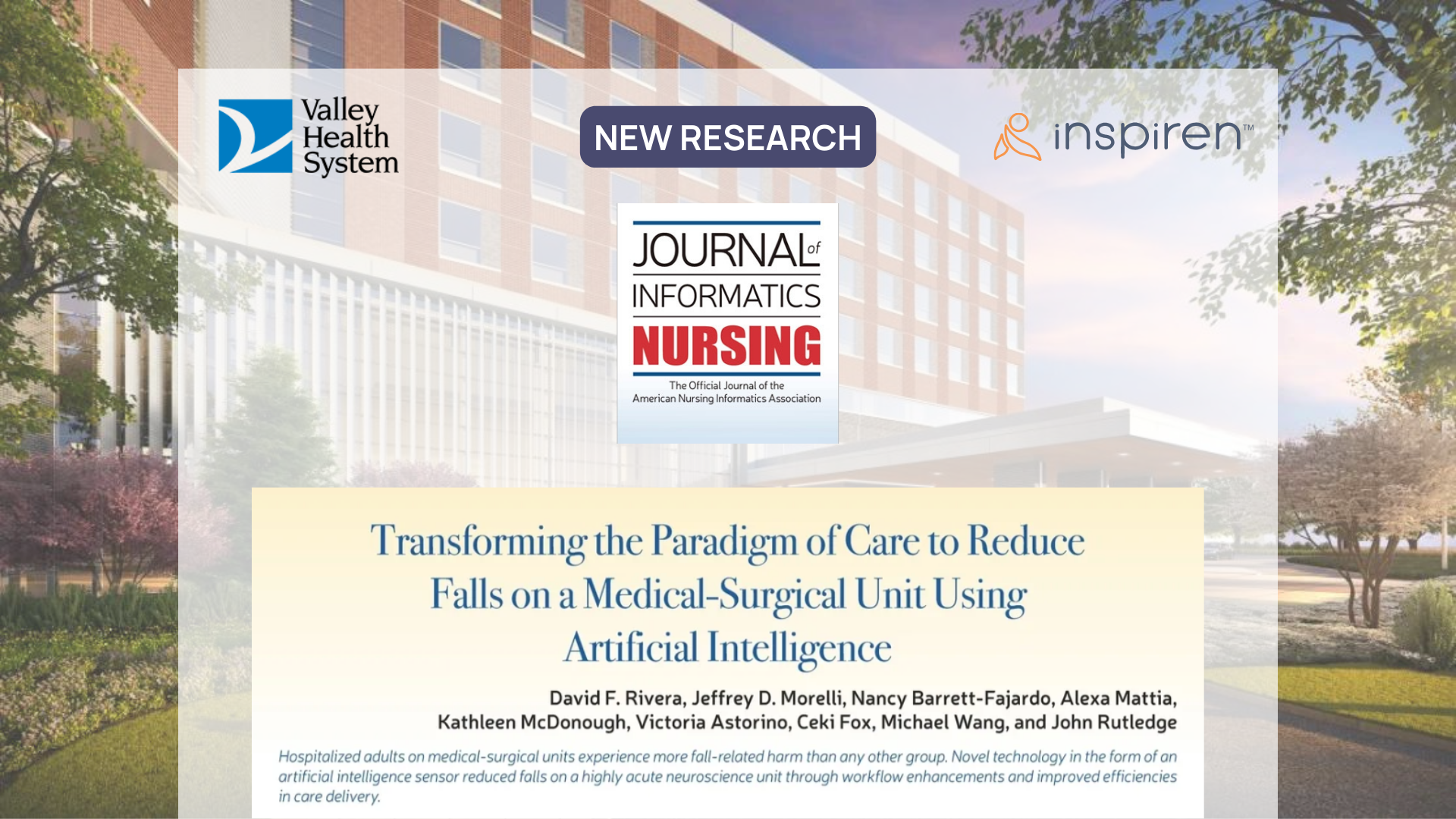
A new study outlines how Inspiren’s AUGi, an AI-Driven platform, helped The Valley Hospital decrease inpatient fall rates, improve safety protocol compliance, support staff, and enhance patient outcomes.
Background
High reliability organizations (HROs) in healthcare prioritize achieving ‘zero harm,’ a goal emphasized by governing agencies. In recent years, the U.S. healthcare system has faced significant challenges, including the COVID-19 pandemic and a severe nursing shortage. These stressors, along with staffing and resource shortages and a vulnerable, complex patient population has exacerbated care delivery issues.
Each year in the United States, 700,000 to 1 million patients fall while in the hospital, and an estimated $50 billion is spent in fall-related healthcare costs. Care facilities have had to adapt rapidly, leading to innovative solutions and a shift in how healthcare leaders address longstanding problems.
Purpose
This new research, as published in the Journal of Informatics NursingⓇ, highlights how The Valley Hospital tackled considerable healthcare challenges stemming from the pandemic, including shortages of nursing staff and declining patient safety, along with the challenge of reducing inpatient fall rates using existing tools. Pressure-activated sensors such as bed or chair alarms had limited success while traditional fall risk assessment tools did not adjust rapidly enough to enable timely interventions.
The Valley Hospital’s primary objectives were to reduce inpatient falls and optimize workforce efficiency in care delivery. One key strategy to achieve these goals was to improve compliance with protocols related to bedside shift report (BSR), hourly rounding (HR), and fall prevention interventions using novel technology.
Methods
Recognizing the need for a comprehensive solution, the hospital introduced AUGi, Inspiren’s advanced hybrid sensing technology, on a single med-surg unit, to evaluate results before wide scale deployment in the current and new facilities.
The initial implementation site included a 28-bed Neuroscience U-shaped unit with the highest acuity of all med-surge units. Installation was completed in one day with no disruption to patients. Onsite staff training and support were provided by the project team to facilitate adoption in the nursing workflow.
Results
The study outlined the following results:
- Patient falls – Achieved a 38% reduction in patient falls in a 3-month period of the study and sustained reduction in falls in the following 9 months.
- Safety Protocol Compliance – Achieved a significant increase in bedside shift report events and increased hourly rounding compliance by staff throughout the study period.
- Staff Efficiency – Despite the 2022 Omicron surge that caused a shortage of staff and increasing patient acuity, the staff maintained hourly rounding compliance compared to baseline levels before the surge. The overall clinical workflow improved with the use of multi-live view into all patient rooms at the central nurses station, use of live view in response to call bell activations and remote bed alarm checks, and the ability to coordinate staff based on assignment and location.
Conclusions
Hospitalized adults on medical-surgical units experience more fall-related harm than any other group. Even with the high acuity, staffing shortages, and a patient surge due to the pandemic influence of omicron, the impact of AUGi on tackling these challenges while enhancing patient outcomes was significant.
Novel AI technology such as Inspiren’s AUGi reduced falls on a highly acute neuroscience unit, as well as enabled workflow enhancements and improved efficiencies in care delivery. The application of this technology continues to grow – following the pilot deployment and successful results, Inspiren expanded to six additional hospital units including Oncology, Med-Surg, Stepdown, and Orthopedic units at The Valley Hospital with expansion plans for the upcoming new hospital next year.
Read the full research here.
To learn more about The Valley Health and Inspiren partnership, and results from expanded implementation, here.